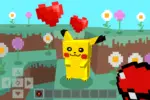It’s 2022, which means the internet has existed for nearly an astonishing 40 years. This means that, unfortunately, many young internet users are unaware of just how vast the history of internet customization was. In the early 2000s, the internet was a place prided for its distinctive ability to allow users to both connect with others as well as engage in self-expression. Places like MySpace allowed for such a level of customization that users could choose what the entirety of their profile looked like down to the colors and positions of each feature. The internet of today is one that privileges a more corporate, streamlined aesthetic and has stripped away so much of the individuality that was once revered online. Sites like Instagram, TikTok and Twitter allow for such a minimal amount of page customization it’s devastating. Even places like Tumblr, prided for their code-based form of customization, have several constraints.
What happened to internet customization?
It is not immediately apparent why internet customization had such a rapid, vigorous downfall. After all, it doesn’t seem like users themselves want platforms to look identical to each other, nor do users seem to want their profiles to be identical to that of every other user. One common hypothesis that explains the decline of internet customization is the rise of consumer-based, corporate advertising that has infiltrated every available social website. It is undoubtedly easier to market products toward an audience who prioritize the same aesthetic ideals. For instance, the Instagram algorithm drives the popular tag #bookstagram to privilege certain aspects of layout, staging, and composition over others to lure in the intended audience. This then sets the stage for advertising to appeal more directly to the user base, as it is abundantly obvious what is “popular” on that website.
Another web design theory indicates that there are certain page formats that simply work better for navigation and advertising. This may explain why video and image-based platforms approve of a grid layout, while text-based sites like Twitter and Tumblr use a linear layout. The prevalence of nearly-identical websites is also a result of web design that aims to make web pages responsive on all devices. Sites that are not responsive on, for example, mobile devices, may be entirely unusable on a cellphone and therefore see less engagement.
Regardless of the precise reasoning for the decline in customization online, it is worth mentioning that there are online spaces that still hold on to the old-internet way of life.
Introducing… Neocities
Neocities was founded and launched by Kyle Drake in 2013. While Neocities initially served as an archive for a now terminated website called GeoCities, the site now functions as “a social network of 513,500 web sites that are bringing back the lost individual creativity of the web.” Upon navigating to Neocities, new users will be prompted to create an account. As they sign up, users are offered two different payment tiers to choose from: free and $5 a month. For free, users are granted access to 1GB of storage for their website, while the $5 plan allows for 50GB. 1GB of data may sound dismally low to someone unfamiliar with coding and web design, but users will quickly notice that 1GB of code files is an incredible amount. Filling up 1GB of storage as a beginner is an impressive feat; not many accomplish it on their first try. 1GB is more than enough to code a full-fledged website. The only other notable difference between the two plans is that certain files like MP3s require the paid plan. All funds go towards maintaining the Neocities servers, and as a website that is so opportunistic and fascinating to explore, Neocities is worth the $5 monthly cost.
How to Get Started
Upon entering the Neocities dashboard, there are two important files to take note of: style.css and index.html. Each file already contains a short amount of code to demonstrate how code works, and the site itself contains numerous helpful tutorials to get beginners started. The index.html files serve as the website’s home page, and the style.css file contains all custom elements like colors, fonts, etc. When using Neocities, the best and most challenging part is that deleting all of the data in the index and style files leaves users with a completely blank website. It is up to the user to build their site from the ground up. Neocities sites can be absolutely anything – blogs, art portfolios, chatrooms, diaries and so much more. Every single aspect, down to the pixel, is entirely customizable by the site owner, making Neocities a precious outlier in a land of identical social sites.
In addition to the existing tutorials, a significant number of Neocities users have websites dedicated to webmastery and Neocities-related resources. One of the most popular users on the site, Sadgrl, dedicates major sections of her website toward helping others enjoy a customizable user experience. For example, Sadgrl has an entire webmastery category with icons to use, helpful HTML and CSS guides that explain how to get started, a layout builder that generates a base code that users can paste and edit and so many more valuable resources. All of her resources are completely free and easy to use and have helped hundreds of users cultivate a passion for web design.
Why does online individuality even matter?
Practically nobody can go about their daily lives without recognizing the role that the internet plays. From homework, to employment, to hobbies, the internet serves a novel role in connecting individuals to endless knowledge, and each other. A place with this much influence on society should reflect the society it represents. Online individuality is important in the same way that decorations in a bedroom or entire house are important. Outward representations of personality give people something to share, something to bond to and an idiosyncratic means of self-expression. When users are able to fully customize their space on the internet, they create a network of meaningful, personal artwork. Browsing the websites available on Neocities provides valuable insight on the internet’s infinite possibilities.
Users like Sadgrl have a strong passion for the way the internet used to be, where spaces were loved and treasured by their beholders. Sadgrl is the owner of Yesterweb, a place where hundreds of individuals who are passionate about the old-web collect and connect. The opportunity for individuality presented by the internet should not be neglected, and the value of websites like Neocities cannot go unnoticed. Sadgrl’s work further models the remarkable impact that online customization can have. Overall, online individualism makes the internet interesting, innovative and more enjoyable; as everyone is able to exercise their creativity and find themselves a home on the web.
If creating a personal haven online is of interest, Neocities is the perfect place to get started. For those interested in Neocities, it is helpful to have preexisting knowledge of coding HTML, CSS or JavaScript. However, there are abundant resources on the Neocities website for beginners. Someone who has never tried to code before can learn through Neocities while simultaneously creating a website that provides a window into their personality. This is an online opportunity unlike any other.

















